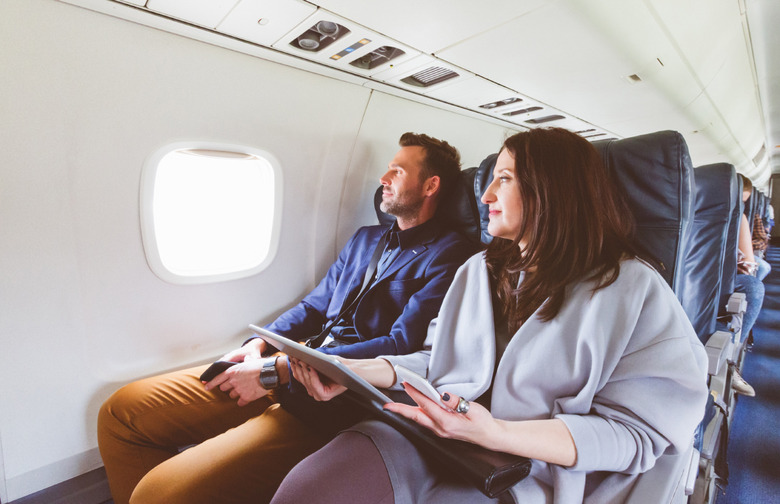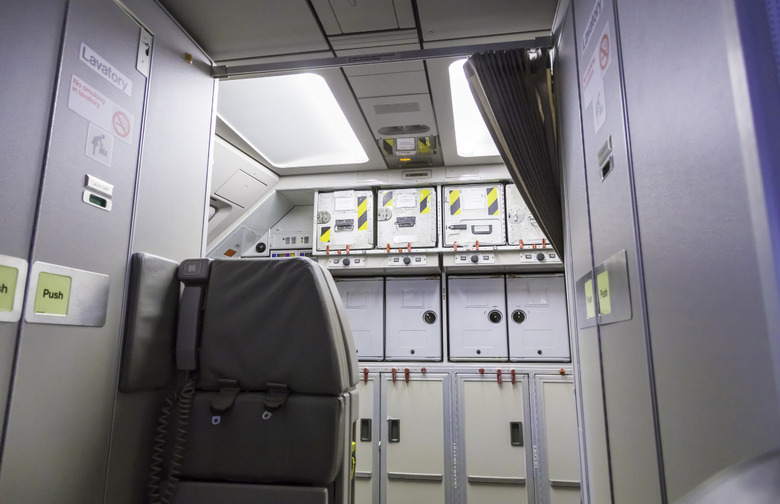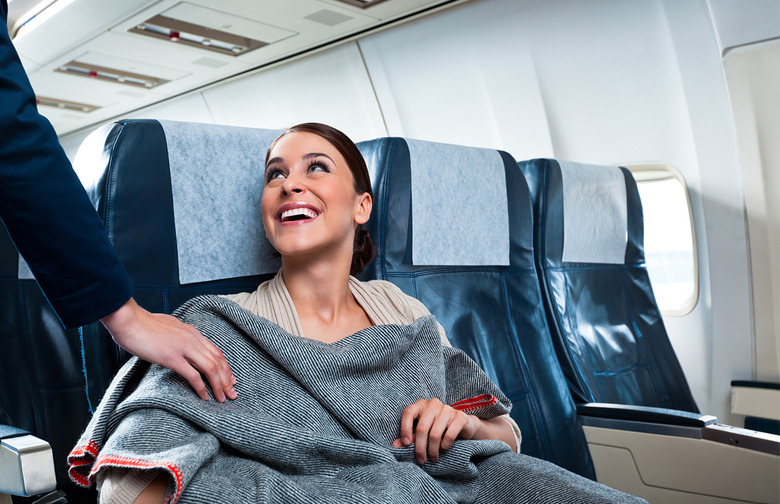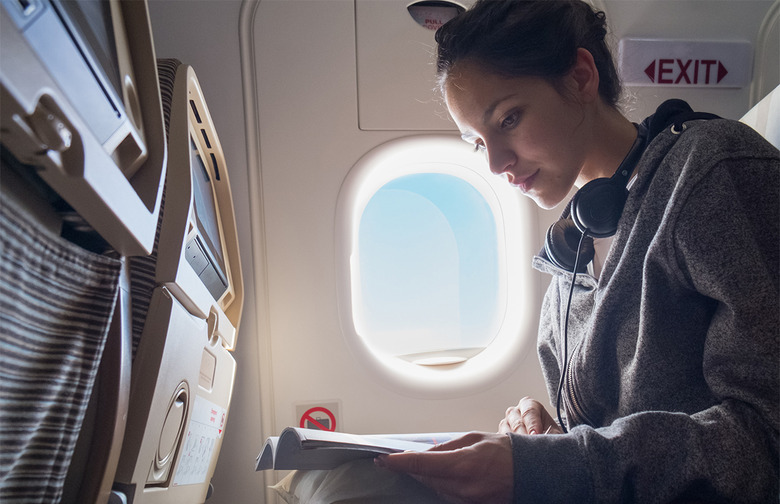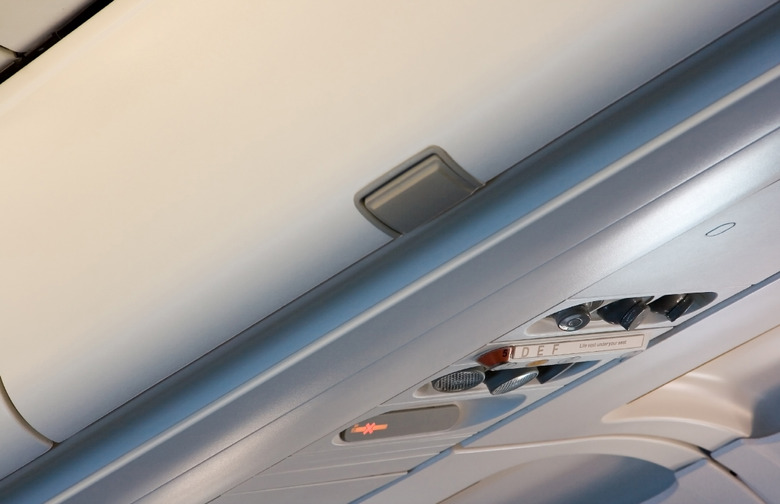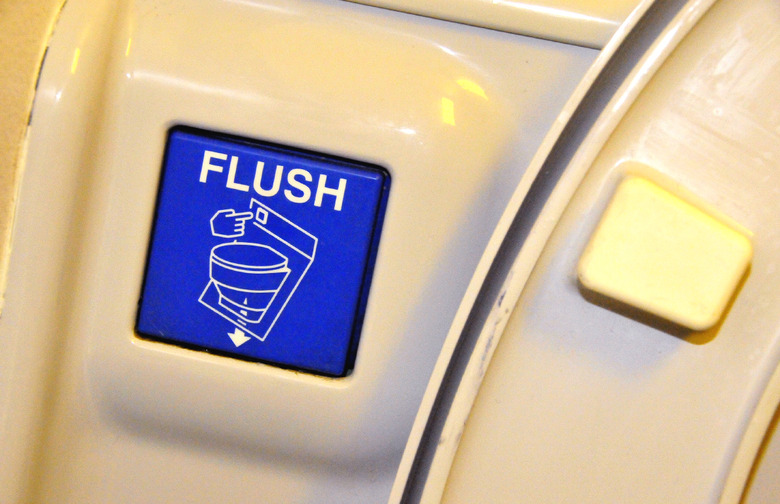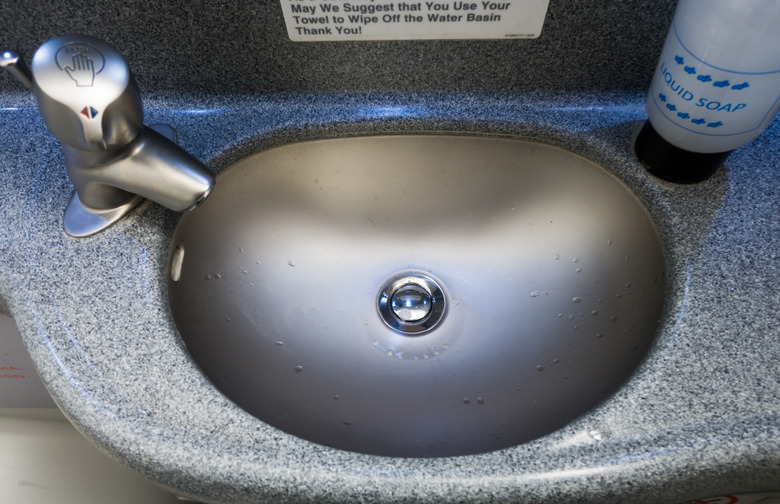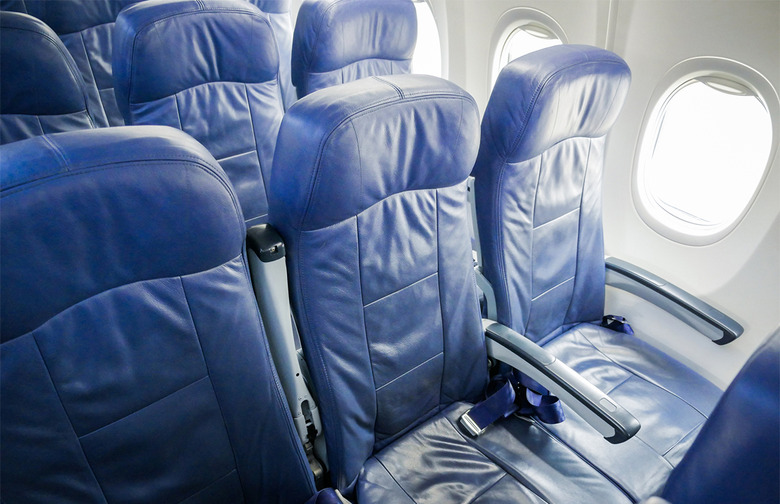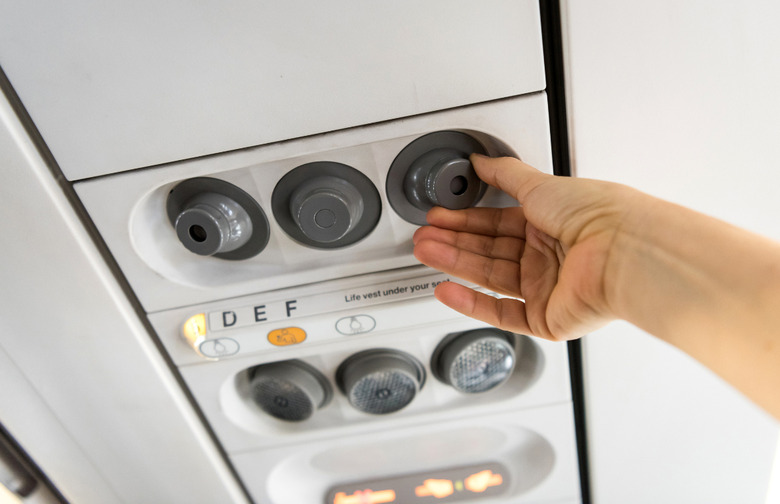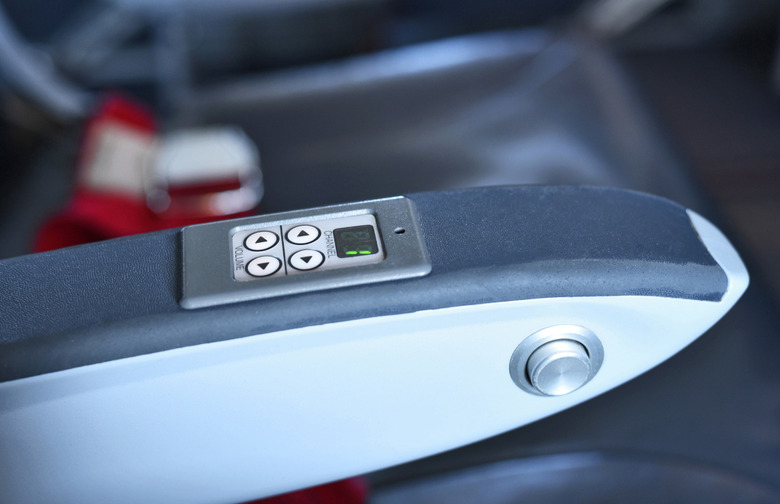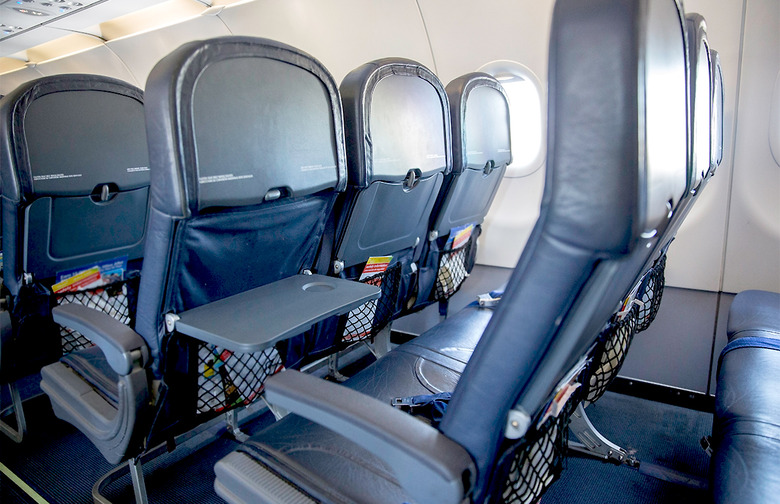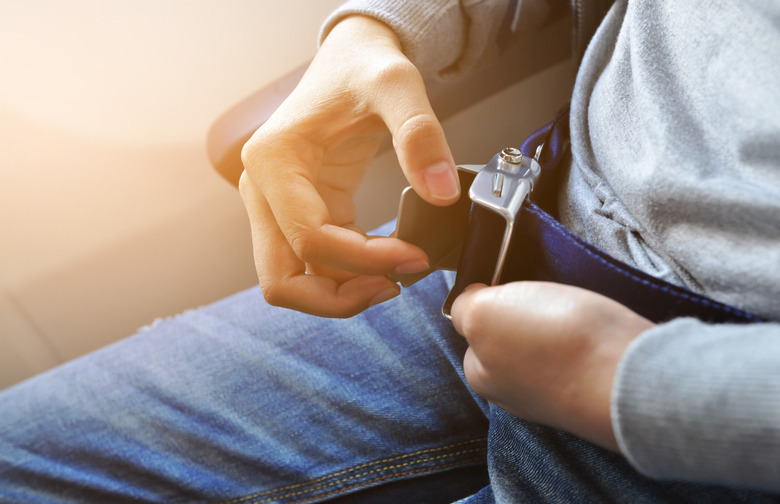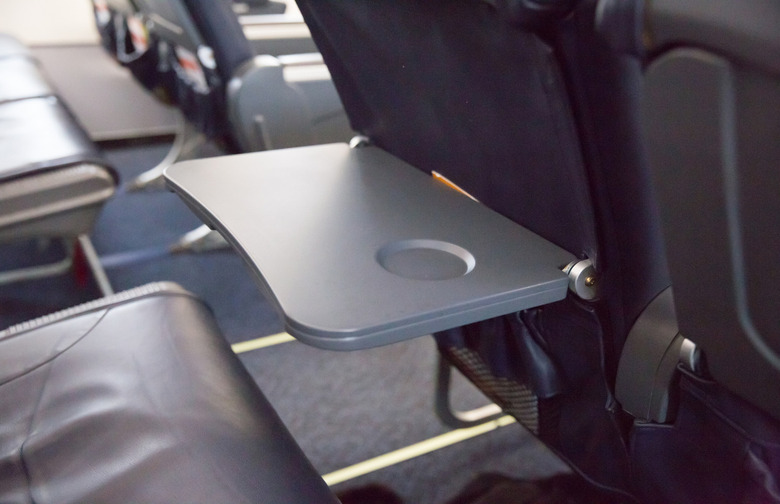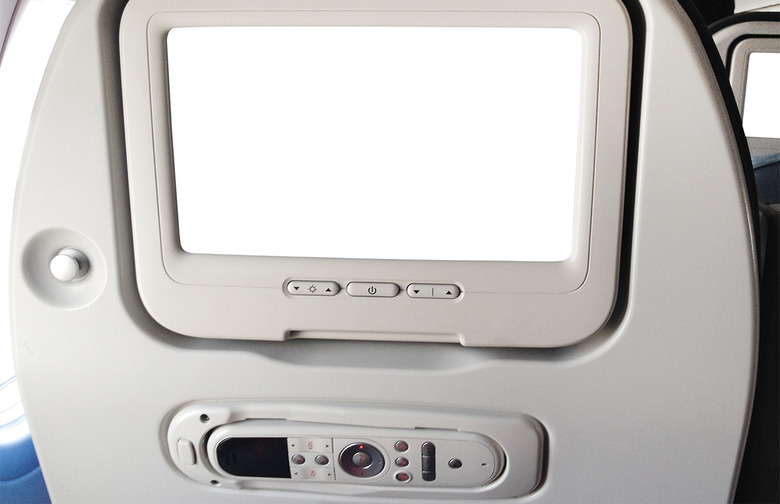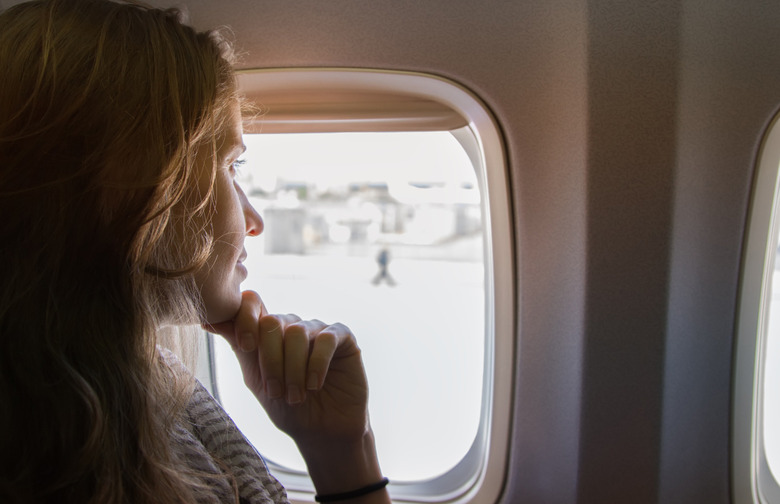The 15 Dirtiest Places On An Airplane Slideshow
With all the stress of packing, long lines, unpacking, and other traveling tedium, you're probably not prioritizing sanitation when you board an airplane. You're just trying to make it to your seat intact before you're run over by the boisterous family of five waiting in line behind you.
But an airplane is one of the places you're most likely to get sick while traveling. Hundreds of people are piled into a compact cabin just minutes after hundreds of other people walked out — it's a setup for germ disaster.
Passengers' hands touch the windows, the seats, the overhead bins, and so much more. When germs hit a surface, they can remain alive there for hours, and in some cases days. That's days of germy pileup waiting for you as you board.
Then, once you've touched everything, you sit down and touch your face, touch your eyes, and dig in to the complimentary snacks without thinking twice. This is where people go wrong and often get sick. But if you know where germs are lurking, you can take the appropriate steps to be cautious and keep infectious germs at bay. Here are the 15 dirtiest places on every airplane. Click here for the germiest spots in your hotel room.
Aisle Seats
Picking a window seat will help you fall asleep on a long flight — but that's not the best thing about it. It'll also protect you from germs, most of which are waiting for passengers in the aisle seats of the plane. The freedom of being able to get up whenever you want throughout the flight comes with a risk. The tops of the aisle seats have captured germs from hundreds of passengers who have walked by.
Bathroom Stall Locks
Here's a door handle you don't want to touch. Everyone who goes in and out of that tiny bathroom is touching the door lock — including you when you're on your way out of the bathroom and don't bother to wash before digging in to whatever snack awaits you in your seat.
Blankets and Pillows
You might feel exposed and awkward, but there's nothing less comfortable than knowing just how much bacteria is festering in the pillows and blankets passed out in-flight. The only safe kind are the ones wrapped in plastic. Otherwise, you're reusing a blanket that's been recycled through dozens of other passengers without being washed. As any frequent flyer will tell you, you need to BYOB (bring your own blanket).
In-Flight Magazines
You might think nobody reads these ad-heavy publications, but they definitely do. When you reach for the pamphlet, you're risking exposure to germs from hundreds of hands before you. These magazines are hardly ever swapped out for fresh ones, and they are impossible to clean.
Latches of Overhead Bins
Those overhead bins are often manhandled but never disinfected. This was confirmed in a report by USA Today that revealed the overhead bins and handles are almost never cleaned.
Lavatory Flush Buttons
This button could have more germs than the actual toilet. When you flush, make sure you use a paper towel to press the button and wash your hands directly after. Whatever you do, don't touch the button and then touch your eyes. That's just asking for a nasty case of conjunctivitis.
Lavatory Sink
Think about it. Before you wash your hands, what surface do you touch? That's right: You touch the sink. Then, you touch it again after you've washed. Use a paper towel to turn the sink off after you wash your hands thoroughly to avoid exposing yourself to bacteria all over again.
Leather Seats
You might think that a leather seat would be much cleaner than a carpet one, but studies show that's not necessarily true. They're only cleaner if the in-flight crew decides to clean the seat between uses. Often, this doesn't happen thoroughly enough. According to a report by Travel + Leisure, the routine cleaning doesn't eradicate the germs left behind by others' behinds.
Overhead Air Vents
Feeling a little warm? Might want to just deal with it. The tiny knob that controls your overhead air vent is harboring a gross swarm of bacteria from the many other meddlers before you. The air quality itself, through, is actually really good. The air completely recirculates once every two or three minutes.
Rubber Arm Rests
According to a study by Auburn University, bacteria can live on a rubber armrest for up to 96 hours. That's four days worth of passenger germs and residue waiting for you to lean on.
Seatback Pocket
You've probably seen crumbs in those seatback pockets at least once or twice. People use the seatback pocket as a convenient place to store books, electronics, drinks, and even snacks. However, you might want to clean off those belongings before touching them, or worse, eating while you use them. The Auburn University researchers found MRSA could survive in the seat pocket material for up to 168 hours. Considering your in-flight crew is definitely not cleaning those pockets thoroughly between flights, that's a ton of bacteria from other people's trash you're risking.
Seatbelt Buckles
This isn't an excuse not to wear your seatbelt. Listen to your flight crew and buckle up! However, you might want to consider sanitizing before and after you click your buckle closed. Dozens of people have touched that piece of metal before you, as you can probably see from the fingerprints left behind.
Tray Table
Yes, they expect you to eat off of these surfaces. According to an alarming study in 2015, these trays have 2,155 colony-forming units of bacteria per square inch. The National Science Foundation says just 127 cfu/sq. in. is standard for a toilet seat at home. If flight attendants should be disinfecting any surface in an airplane, it's these trays. Unfortunately, they aren't — so the best you can do is wipe down your tray table yourself.
TV Remote
If your airline does offer an in-flight entertainment system, be cautious before touching the remote control buttons. Your TV remote at home is nasty enough — and that's when you and your family are the only ones touching it. Now imagine the bacteria allowed to pile up after dozens of uses from passengers each day. Yeah, you're going to want to wipe that down before you use it, too.
Window Shade
On most flights, you have to touch the window shade when your flight attendant requests you pull it down. The reason why they ask this is a little unnerving — kind of like the reason they dim the lights. But nowhere near as scary as the infestation of germs waiting for you on the handle.
Now that you know what surfaces to deep clean before eating your in-flight meal, here are some alarming facts about the airplane's food you want to know before ordering.

